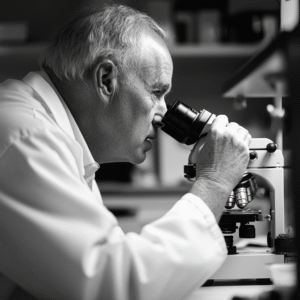Kidney Cancer Treatment
Welcome to Beat Cancer Now! In this comprehensive guide, we will delve into the latest research and practices for kidney cancer treatment, examine factors that affect kidney cancer survival rate, discuss kidney cancer diagnosismethods, explore the role of natural remedies for kidney cancer, and review key considerations surrounding kidney cancer surgery. Our goal is to equip you with a clear understanding of the therapeutic landscape so you can make informed decisions about your health or that of your loved ones.
Table of Contents
- Understanding Kidney Cancer
- Kidney Cancer Survival Rate: Key Influencing Factors
- Kidney Cancer Diagnosis: Early Detection and Screening
- Comprehensive Kidney Cancer Treatment Options
- Natural Remedies for Kidney Cancer: Holistic Support
- Lifestyle Adjustments After Kidney Cancer Treatment
- Staying Positive and Finding Support
- Conclusion
1. Understanding Kidney Cancer
Kidney cancer, also known as renal cancer, occurs when malignant cells form in the tissues of one or both kidneys. These bean-shaped organs are located on either side of the spine and are responsible for filtering waste products from the blood. When cells in the kidney begin to mutate and grow uncontrollably, they can form tumors that may spread to other parts of the body.
Common Symptoms and Risk Factors
Recognizing the risk factors and potential symptoms is critical for timely intervention. While some individuals may remain asymptomatic until the later stages of the disease, the following warning signs may appear as kidney cancerprogresses:
- Blood in the urine (hematuria)
- Persistent lower back or flank pain on one side
- Unexplained weight loss or fatigue
- A palpable mass or lump near the kidney region
- Chronic fever unrelated to other illnesses
Several factors can increase the likelihood of developing kidney cancer, such as smoking, obesity, high blood pressure, and a family history of this disease. Certain hereditary conditions, such as von Hippel-Lindau disease, can also heighten susceptibility.
You can check our articles for: “Common Cancer Symptoms: Recognizing the Early Signs for Better Outcomes“
2. Kidney Cancer Survival Rate: Key Influencing Factors
The kidney cancer survival rate varies based on several criteria, including:
- Stage of Diagnosis: Early-stage kidney cancer, confined to the kidney, typically has a higher survival rate because treatments can be more effective when cancer is localized.
- Tumor Size and Location: Tumors smaller than 4 centimeters often have better outcomes with appropriate interventions.
- Patient’s Overall Health: Individuals with fewer comorbid conditions, such as diabetes or heart disease, may have a better response to treatments.
- Treatment Method: Advances in surgery and targeted therapies can significantly improve prognosis if implemented promptly and appropriately.
According to various cancer registries, the five-year survival rate for localized kidney cancer (cancer that has not spread beyond the kidney) can be quite favorable, often above 90%. However, survival rates decrease when the disease metastasizes to distant organs. It is essential to remember that these statistics are general estimates: each patient’s situation is unique, and survival rates do not determine individual outcomes.
3. Kidney Cancer Diagnosis: Early Detection and Screening
Kidney cancer diagnosis begins with a thorough evaluation of symptoms and risk factors. Doctors employ various diagnostic tools to detect the presence, size, and extent of tumors.
Common Diagnostic Tools
- Imaging Scans: Ultrasound, CT (computed tomography), and MRI (magnetic resonance imaging) scans help visualize the kidneys, revealing masses or other abnormalities.
- Urinalysis: The presence of blood in the urine can be an early warning sign, prompting additional imaging.
- Blood Tests: Tests like serum creatinine and blood urea nitrogen (BUN) can show how well the kidneys are functioning. While these tests do not diagnose cancer specifically, abnormal levels may prompt further investigation.
- Biopsy: In certain cases, a small sample of kidney tissue is obtained and examined microscopically to confirm a cancer diagnosis.
Importance of Early Detection
Early detection remains a cornerstone of improving kidney cancer survival rate. Routine check-ups and prompt medical attention when noticing unusual symptoms can pave the way for timely interventions. Doctors can tailor treatments more effectively when they have a clear picture of the tumor’s size, location, and spread.
4. Comprehensive Kidney Cancer Treatment Options
The spectrum of kidney cancer treatment approaches has evolved dramatically in recent decades. From conventional surgical methods to targeted therapies and immune system boosters, patients now have an array of options to consider.
4.1 Conventional Therapies and Surgical Options
Radical Nephrectomy
A radical nephrectomy involves the removal of the entire kidney, the adrenal gland, and sometimes surrounding tissues. Historically, this surgical approach was considered the standard for localized kidney cancer that has not spread to distant sites. However, it may not be necessary in all cases, especially for smaller tumors.
Partial Nephrectomy
Partial nephrectomy aims to remove only the tumor and some surrounding tissue, preserving as much healthy kidney tissue as possible. This procedure helps maintain better renal function and can be as effective as a radical nephrectomy for smaller tumors, typically those less than 4 centimeters in size.
Ablative Therapies
- Cryoablation: Uses extremely cold temperatures to destroy cancer cells.
- Radiofrequency Ablation (RFA): Employs high-energy radio waves that generate intense heat, targeting and eliminating cancerous cells.
Ablative therapies are minimally invasive and often well-suited for patients with smaller tumors or those who may not be ideal candidates for more extensive surgery.
Targeted Therapy and Immunotherapy
Beyond surgical interventions, doctors also use targeted therapies that focus on specific proteins or genetic features of the cancer cells. Immunotherapy, on the other hand, strengthens the body’s immune response to attack cancer cells. These therapies can be used alone or in combination with surgery, depending on the disease stage and individual patient factors.
4.2 Paraphrased Findings on Surgical and Ablation Procedures
Below is a paraphrased summary of key research findings regarding kidney cancer surgery and ablative methods:
Traditional and Surgical Approaches to Kidney Cancer
In many cases, eliminating a cancerous tumor with a specialized needle technique has been found to offer nearly the same long-term control of kidney cancer as surgery, especially for small renal tumors.
This conclusion emerged from a major study published in the journal European Urology, led by urologist Dr. R. Houston Thompson. If further research confirms these findings, they could potentially update current clinical guidelines and regulations.
Historically, a radical nephrectomy (the complete surgical removal of the kidney) was considered standard for kidney cancer treatment. However, partial nephrectomy—where only part of the kidney is surgically removed—has gained traction due to its ability to preserve functioning kidney units, called nephrons. Nephrons filter toxins from the body, so leaving some behind can result in better long-term kidney health.
In the study, patients were divided into three groups: those who underwent a partial nephrectomy, radiofrequency ablation (tumor removal via intense heat), or cryoablation (tumor removal using extremely low temperatures). Researchers analyzed data from 1,803 patients, with 1,057 receiving partial nephrectomy, 180 undergoing radiofrequency ablation, and 187 receiving cryoablation. All had tumors that measured no more than four centimeters in diameter.
The rate of “recurrence-free survival” (survival without evidence of additional kidney tumors) appeared similar across all three groups, while “metastasis-free survival” (survival without cancer spreading to distant sites) was notably higher in those who had partial nephrectomy or cryoablation.
Although cryoablation and radiofrequency ablation were historically seen as less effective compared to surgical removal, these latest findings indicate that results from all three techniques are practically comparable.
These insights suggest that advanced ablative methods are suitable for small renal tumors and may achieve outcomes on par with partial nephrectomy. For larger tumors or more advanced stages of kidney cancer, however, surgical options often remain the first line of treatment. Ultimately, treatment decisions hinge on the tumor’s characteristics and each patient’s overall health and preferences.
5. Natural Remedies for Kidney Cancer: Holistic Support
In addition to mainstream treatments such as surgery, ablation, and immunotherapy, some patients explore natural remedies for kidney cancer. These holistic or complementary approaches should never replace standard medical treatment but can offer supportive benefits that improve overall well-being.
Common Natural Remedies and Supplements
- Herbal Support: Certain herbs, such as green tea extract, turmeric, and astragalus, may have anti-inflammatory and antioxidant properties.
- Dietary Adjustments: A balanced diet rich in fruits, vegetables, and whole grains can bolster the immune system and help maintain a healthy body weight.
- Mind-Body Practices: Yoga, meditation, and tai chi can reduce stress, anxiety, and fatigue, improving quality of life.
- Acupuncture and Massage: Some individuals find these therapies helpful in managing pain, reducing nausea, and improving sleep.
Important Note
Before incorporating any herb, supplement, or alternative therapy, it is essential to consult a healthcare provider. Interactions between certain supplements and cancer medications can be harmful, and only a qualified professional can guide safe integrative care.
6. Lifestyle Adjustments After Kidney Cancer Treatment

Following successful treatment, patients often need to adopt new routines to protect their remaining kidney function and overall health. By embracing these lifestyle changes, individuals can potentially enhance their long-term outcomes and quality of life.
Nutritional Considerations
- Stay Hydrated: Proper hydration helps the kidneys filter waste but should be balanced with any fluid restrictions set by your healthcare provider.
- Monitor Protein Intake: Consuming moderate amounts of high-quality protein (e.g., lean meats, fish, beans) can support renal health without overtaxing the kidney.
- Limit Sodium: A high-sodium diet can increase blood pressure, compounding stress on the kidneys.
Physical Activity
Staying physically active benefits the cardiovascular system, helps maintain a healthy weight, and supports mental well-being. Simple exercises like brisk walking, swimming, or low-impact aerobics can be introduced after consulting with a physician or physical therapist.
Follow-Up Care and Monitoring
Regular check-ups, imaging scans, and blood tests remain vital after kidney cancer treatment. These periodic evaluations help detect any signs of recurrence early and address potential complications swiftly.
7. Staying Positive and Finding Support
Dealing with a diagnosis of kidney cancer can be stressful and overwhelming. Emotional and psychological support is just as important as medical intervention. Patients and caregivers alike can benefit from various forms of assistance:
- Support Groups: Online forums, local meetups, and hospital-sponsored programs provide peer support and shared experiences.
- Therapy and Counseling: A professional counselor or psychologist can help manage anxiety, depression, or relationship challenges tied to serious illness.
- Spiritual Guidance: Some find comfort in faith-based communities, mindfulness practices, or spiritual counseling.
Living with kidney cancer involves more than just physical treatments. Addressing emotional health can significantly influence overall recovery and resilience.
8. Conclusion
Kidney cancer treatment has evolved remarkably over the years, providing patients with a variety of potentially life-saving options. Whether it’s traditional surgery, partial nephrectomy, or innovative ablation techniques, the choice of approach depends on a range of factors, including tumor size, stage, and individual health considerations. Emerging research validates the effectiveness of less invasive treatments for smaller tumors, suggesting that cryoablation and radiofrequency ablation can achieve outcomes comparable to surgery.
Early kidney cancer diagnosis, conscientious lifestyle adjustments, and holistic support—such as natural remedies for kidney cancer—can also play crucial roles in maximizing the chance of long-term survival and quality of life. If you or someone you know faces a diagnosis of kidney cancer, remember that a multidisciplinary care team of surgeons, oncologists, nutritionists, and mental health professionals is available to guide you every step of the way.
No two journeys are exactly alike, but by staying informed, asking questions, and surrounding yourself with strong support, you can empower yourself on the path toward a healthier future.


